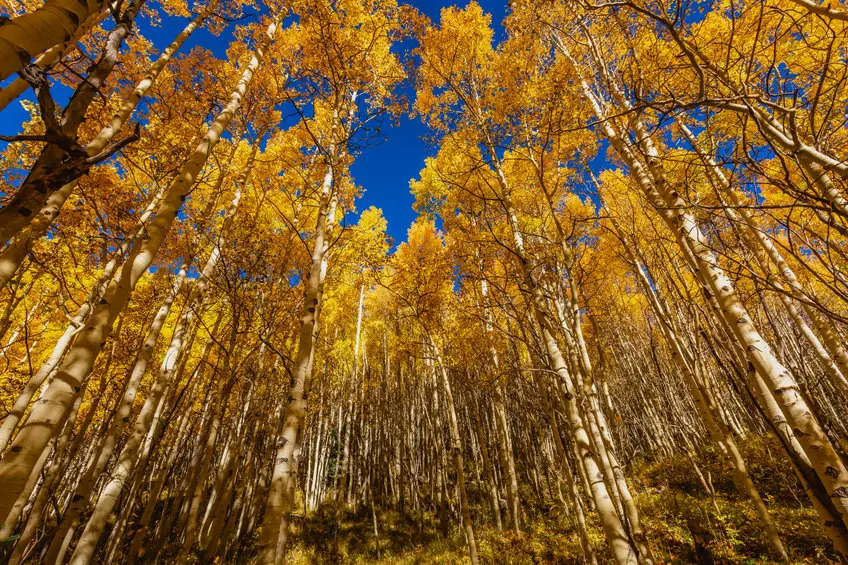
Did you know that Utah’s state tree is the quaking aspen? In March of 2014, Governor Gary Herbert signed a bill to change the state tree from the blue spruce to the quaking aspen. The request for the change came from fourth-grade students at an elementary school in Sevier County. They felt the quaking aspen was truer to Utah’s values because of their singular root system quality, reminding them of how Utahns work together, too. Quakies cover about 10% of forest area throughout the state, whereas the blue spruce covers only about 1% and is generally restricted to the Wasatch and Uinta mountain ranges. The scientific name for quaking aspens is Populus tremuloides, which is why you may hear people call them trembling aspen. Additionally, their beautiful, flat leaves shake in even the slightest of winds as they branch out from the tall, skinny trunk of the aspen. The trees are a commonly found species throughout North America, widely seen in all but 13 states in the United States. Because of the light, soft wood, the quaking aspen is good for making paper, plywood, saunas, gazebos, playground equipment, and more.
Nestled in stunning Fish Lake National Forest in central Utah is the Pando clone. Pando is a Latin word meaning “I spread,” which is wholly applicable for this organism. Originating from a single seed, researchers noticed the impressive and extensive clone in the 1970s. After much research by geneticists, it’s now believed to be the largest and most dense organism ever found, weighing in at about 13 million pounds, stretching over 106 acres, and consisting of over 40,000 individual trees. Some trees within the clone are thought to be over 130 years old, but the clone and root system is estimated to have started at the end of the last ice age. What’s so impressive is that the entire clone started with one seed sending new shoots from a singular expanding root system. The U.S. Forest Service is watching the clone carefully because it is showing signs of decline due to disease, insect infestations, and lack of regeneration.
It’s no surprise that quaking aspens are a popular choice to plant in Utah yards. They are exquisite all year round, but there are some items to consider. They can be prone to insect invasions as well as some diseases, and because of their desire to shoot up new trees along their strong root systems, they don’t love to be all alone in your yard. Many homeowners don’t want numerous aspen sprouts popping up throughout their urban landscape. Because of these factors, they can have shorter life spans, often fewer than 20 years. However, the beauty of the trees can outweigh these drawbacks. If you want aspens, you will need to regularly prune and trim them to provide the best care. Fertilization is also crucial for the maximum health for the trees. Having an expert tree service check for infestations or distress will also be important to your tree, as these are often unseen by the naked eye. Only trust your trees to the experts, especially Utah’s pride and joy tree—quaking aspens.